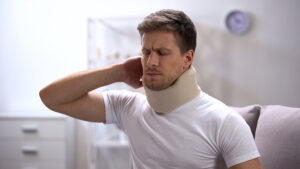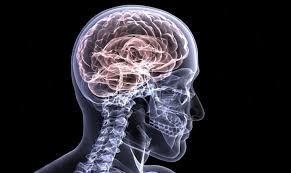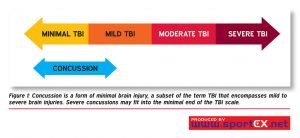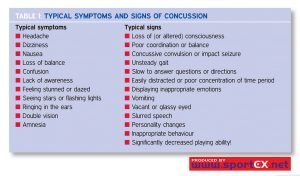
Vertigo is a confusing and scary experience when you feel it, especially for the first time. One minute you're okay, then next thing you know, the world is spinning. It’s even worse if you don't know why and how it's happening. While you can always visit an Encinitas chiropractor, we encourage you to learn more if you deal with vertigo. Hence, you know how to approach and manage your condition when needed.
If you experience falls or any head injury, you are at a high risk of concussion, making you susceptible to more symptoms, including vertigo and other symptoms you'll feel in your head area.
A concussion could happen to both kids and adults alike. Should a sporting activity of a rough play lead to falling or bumping the head, you must watch out for symptoms to know if you are suffering from a concussion. The telling signs can include dizziness, tiredness, feeling off-balance, short-term forgetfulness, trouble in thinking, remembering, or concentrating, headaches, nausea that may lead to vomiting, moodiness, and changes in sleep patterns. These symptoms can either appear immediately or manifest after days from the initial trauma. Not all mentioned symptoms have to be present, too, for you to consider the presence of a concussion.
Anyone suffering from post-concussion syndrome with signs of vertigo can visit an Encinitas chiropractor. Research has shown that dizziness is common after a concussion. In addition, people who endured vehicular accidents or collisions or athletes who participate in contact sports can develop vertigo as a common complication of a concussion.
A head or neck injury can cause the upper cervical bones to misalign, putting stress on the spinal cord and brainstem. This misalignment disrupts the flow of communication signals between your central nervous system and your body. If you are dealing with post-concussion syndrome, you may also experience continuing symptoms. These symptoms include vertigo episodes, headaches, fatigue, neck pain, anxiety, tinnitus, or ringing inside the inner ear.
To learn more about the connection between head and neck injuries and vertigo, download our complimentary e-book by clicking the image below.
This rare inner ear condition affects roughly 615,000 people in the USA. Currently, there is about .2 percent of the population living with this disease. Meniere's disease affects a person's balance and brings out other symptoms, including spinning sensations, congestion in the ear, tinnitus, and neck pain. In addition, experts are looking at an abnormal fluid buildup inside the tubes found in the inner ear causing this condition.
This condition translates to "sickness of disembarkment." This condition gives you the feeling of rocking or swaying while you're still. It's common for people who go on boat rides for long periods, and their brains still think they're on a boat even though they're back on land. Usually, this happens after a few minutes or hours and can even last for a couple of days, but with MDD, the feeling lingers longer.
This is one of the rarest and less understood vestibular system disorders. Apart from people traveling on a boat, individuals who frequently travel by plane, train, and automobile can also experience this condition. In addition, MDD may lead to central vertigo, which can bring uncomfortable symptoms.
This condition is called cervical vertigo and usually occurs with neck pain and dizziness combined. Experts believe that these two health issues are linked to the disturbing sensory nerve fibers found along the neck. These affected nerve endings lead to miscommunication between the brain and the surrounding tissues, causing you to experience false motion. Like post-concussion syndrome, cervicogenic dizziness can stem from a spinal misalignment, specifically along the neck.
This condition usually results from defects or abnormalities in the eight cranial nerves or your vestibular organs or a combination of both. They play a significant role in recognizing your head's orientation or balance. But bilateral vestibular hypofunction causes a malfunction in these body parts. Apart from vertigo attacks, you may also experience being off-balanced, neck pain, depression and anxiety, and cognitive impairment.
A small percentage of Americans experience an autoimmune inner ear disorder. If you're one of them, you might notice a long list of health issues triggered by this condition. Some known issues include neck pain, balance issues, ear congestion, vertigo, and tinnitus or ringing in the ears. When your body starts attacking the cells of your inner ear, you will likely develop an autoimmune ear disease. Usually, your body mistakes these cells for bacteria, viruses, or other pathogens.
You may have noticed that some health conditions causing vertigo are also linked to a misalignment in the neck's bones. These misalignments need to be corrected to help manage vertigo and other symptoms. An Encinitas chiropractor can help correct the misalignments in your upper cervical spine to relieve your spine and brainstem.
Upper Cervical Chiropractic corrects and aligns your spine's top two bones in the neck. This specially designed technique focuses on your upper cervical spine only, which is essential to improve your overall health and minimize pain and discomfort in your body, including vertigo and other symptoms.
When your upper cervical spine shifts out of alignment, your brainstem gets irritated, which affects sending signals, including pain signals, between your brain and body. In addition, trauma and injury can easily affect the alignment of these bones, leading to a series of health concerns.
Dr. Steven P.A. Keener is a trusted Encinitas chiropractor who can help you safely and gently correct the misalignments in your upper cervical spine. Once these misalignments are corrected, your body can utilize its ability to naturally heal to help with your vertigo and other symptoms linked to different health conditions.
To get started with your customized care regimen that best fits your needs, book your appointment by using this form or calling our office at 760-280-5460.
To schedule a consultation with Dr. Keener, call our Encinitas office at 760-456-9470. You can also click the button below.
If you are outside of the local area, you can find an Upper Cervical Doctor near you at www.uppercervicalawareness.com.
 Concussion - it’s a term you never want to hear when meeting with your doctor, and for good reason. This growing fear, however, is often accompanied by a gross misunderstanding of the definition, diagnosis, and treatment of the problem.
Concussion - it’s a term you never want to hear when meeting with your doctor, and for good reason. This growing fear, however, is often accompanied by a gross misunderstanding of the definition, diagnosis, and treatment of the problem.
Today I have the opportunity to sit down with Dr. Steven Keener, an Upper Cervical Chiropractor in Encinitas, CA. Dr. Keener’s advanced knowledge of the brain and its physiology allows him to successfully assess and treat concussions in his office. This Q&A is aimed to help provide a clearer understanding of proper diagnosis, treatment, and management of concussions.
Cathy Homuth (CH): What are concussions, anyways?
Dr. Keener (KEENER): According to the CDC, “A concussion is a type of traumatic brain injury — caused by a bump, blow, or jolt to the head or by a hit to the body that causes the head and brain to move rapidly back and forth.”
When a concussion is experienced, this blow to the head causes the brain to collide with the inside of the skull - this collision between the brain and skull is known as a “Coup-countercoup.” If strong enough, this collision damages the brain and is diagnosed as a concussion.
CH: So, are concussions common?
KEENER: Unfortunately, the answer is yes. Concussion rates have been steadily increasing in recent years. Of course part of this increase can be attributed to increased public awareness of head injuries and better diagnosis from health clinics, but there is no doubt that the number of concussions has been increasing. In 2013, there were 2.8 million emergency room visits, hospitalizations and death that were related to Traumatic Brain Injuries, referred to as TBI’s - so you see this isn’t a small problem, it’s actually quite a large problem.
 CH: The CDC mentions the term TBI, but i’ve heard doctors and other people say mTBI. What do they mean when they say mTBI?
CH: The CDC mentions the term TBI, but i’ve heard doctors and other people say mTBI. What do they mean when they say mTBI?
KEENER: The ‘m’ in mTBI stands for mild. It is important to note, however, that mTBIs can be just as severe as TBIs - and in some cases, even more severe. This is because mild does not refer to the severity of the brain injury - it simply denotes whether or not a skull fracture was sustained. So technically speaking - head injury accompanied by skull fracture = TBI, head injury with NO skull fracture = mTBI.
CH: Okay, so let’s say someone hits their head, but they do not lose consciousness. Does that mean they did not have a concussion?
KEENER: A concussion can occur whether the blow to the head/neck area was severe enough to cause a loss of consciousness or not. In fact, some of the most severe concussion cases I see are cases when the patient denies “blacking out”, or losing consciousness. Even a relatively light blow to the head/neck - say hitting your head on a low door frame, or sitting back to fast and hitting your head on the back of the chair - can result in a concussion.
CH: How do I know if I have suffered a concussion?
KEENER: If you or someone you know has hit their head and are unsure if they have experienced a concussion, you need to go to your healthcare provider for proper evaluation. Your doctor will not only assess the degree of concussion you may have sustained, but will also check for other problems that can occur with head trauma, such as brain-based bleeds and fractures.
According to the CDC, the following four categories of symptoms can be experienced following a concussion.
This is important though - and the CDC is very clear about this. If the following symptoms are experienced, you should seek medical attention immediately:

CH: If I have a concussion, what is the best way to treat it?
KEENER: The first step is removing yourself of the activity or risk that provided you with the concussion in the first place. Too often, especially with kids and sports, the athlete returns to the activity too fast and risks sustaining another concussive blow to the head. This is especially troubling because we know that if a second brain injury is sustained prior to the initial injury FULLY healing, than the damage is compounded and much more severe.
After controlling the risk of a subsequent brain injury, it is important to properly supply the brain proper treatment necessary to heal as fast as possible. You see, when a concussion occurs, the damaged brain cells release chemicals that cause further damage. So it is extremely important to use proper treatment to heal the brain as fast as possible. Every patient and every concussion is so different, but in our office, treatment typically consists of a specialized combination of the following: rest, hydration and nutrition, supplementation, low level laser therapy (LLLT) and head/neck realignment.”
CH: Head/Neck realignment? Go on, how would that help with someone who has suffered from a concussion?
KEENER: That’s a great question. When the hit to the head is strong enough to cause a concussion, turns out it is often also strong enough to disrupt the normal alignment between the head and how it connects to the rest of the spine. When the head and neck are misaligned, a fluid called CerebroSpinal Fluid (CSF) cannot drain out of the head properly. This lack of drainage creates an increase in pressure of the fluid within the skull, creating what is known as Increased Intracranial Pressure. Your brain and spinal cord actually float in this fluid, so the pressurized environment is very bad for brain health. If left uncorrected, this alignment/pressure problem can contribute to Post Concussive Syndrome, which is when concussions continue to cause symptoms and problem for people long after the initial injury to the brain.
You also mentioned Low Level Laser Therapy - do you find that also helps treat concussions?
KEENER: Absolutely. The laser is a great tool for accelerating the healing of all types of tissues. If you dive into the science, it has been shown to speed up the healing of cuts, ligament tears, and tissue trauma nearly 30% faster when compared to control groups. Scientifically, the laser works by photo-stimulating the mitochondria inside the cells. The mitochondria are responsible for the energy production the cell needs to function. So this stimulation results in cells being more efficient in how they utilize energy. Clinically, this means the laser will reduce inflammation and stimulate a faster healing response - both of which is critical when talking about healing from a concussion.
CH: That is so fascinating. Thank you so much Dr. Keener for taking the time to sit down with me today.
KEENER: Anytime. Thanks Cathy.

Monday & Thursday:
10am - 1pm | 3pm - 6pm
Tuesday & Wednesday:
8:30am - 11:30am | 1:30pm - 4:30pm
Friday, Saturday, Sunday:
CLOSED